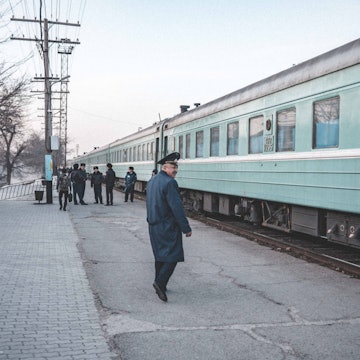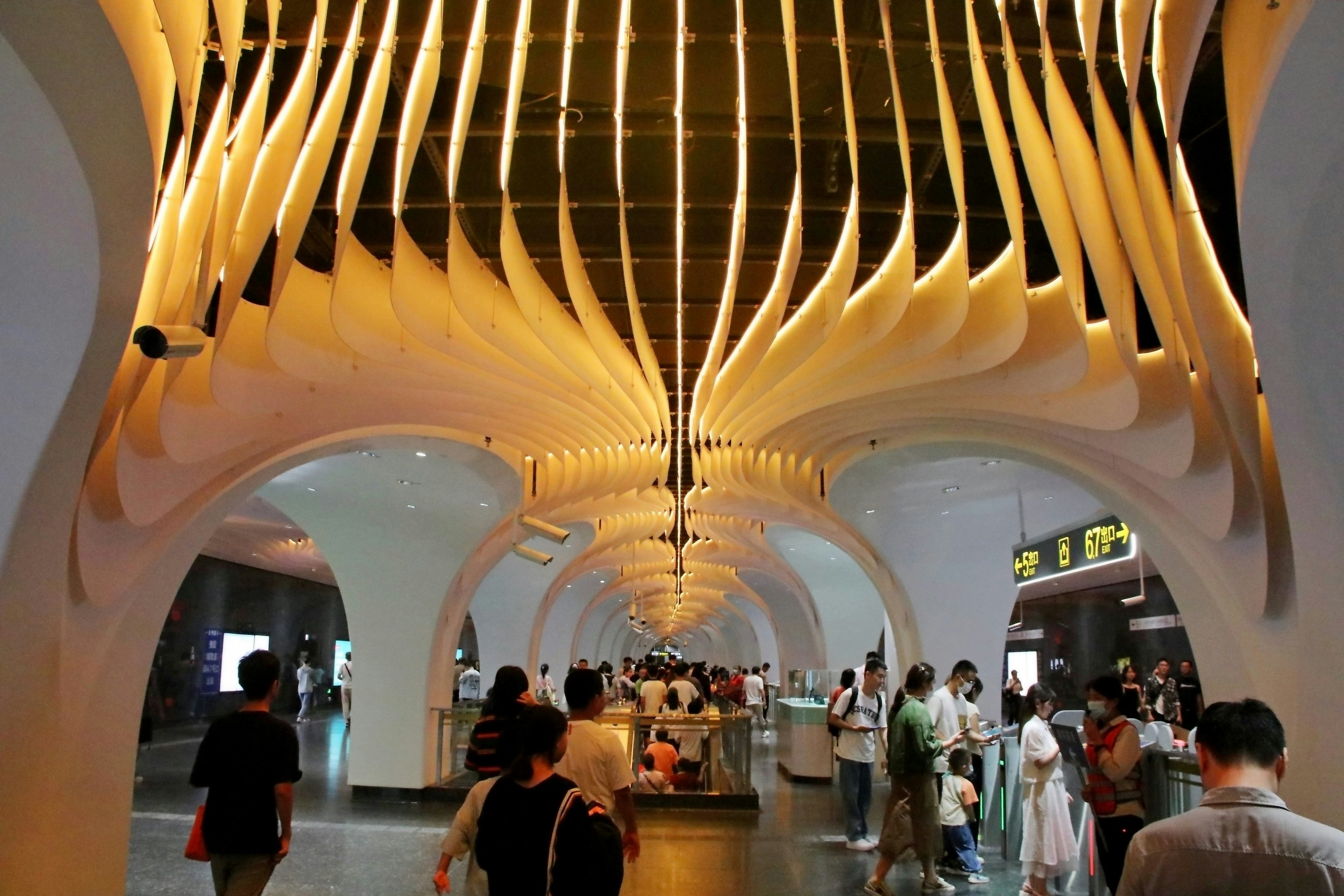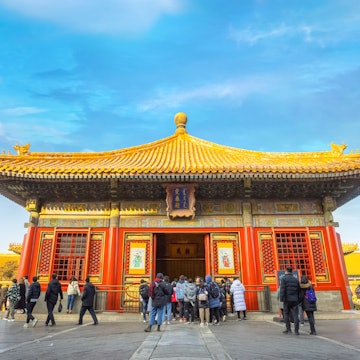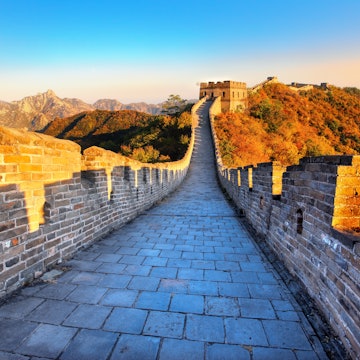

A high-speed train in Chongqing, China. QinJin/Shutterstock
At some 3.7 million sq miles (9.6 million sq km), China is astonishingly huge, amazingly diverse – and remarkably well connected.
A world-leading high-speed-rail network stitches together major cities at record speeds, while domestic flights reach the country’s farthest corners. Buses link rural villages, while within urban centers, well-designed metro systems and pedestrian-friendly roads make walking and cycling appealing choices.
Yet finding your way around China here isn’t just about transport: it’s about preparation, too. Since China is a largely cashless society, most transactions require digital payment apps like WeChat Pay or Alipay, which are essential for everything from metro fares to street food. To ensure a seamless journey, we’ve put together this comprehensive guide on how to get around China.

High-speed trains are the most efficient way to travel between cities
China’s massive train system – encompassing 100,600 miles (162,000km) of tracks, with 29,800 miles (48,000km) dedicated to high-speed service – provides the most efficient way to travel between major population centers. Indeed, this is the world’s largest high-speed-rail network, connecting more than 500 cities. These ultra-modern trains reach speeds of up to 217mph (350km/h), making long distances surprisingly manageable. A trip from Shanghai to Hangzhou, for instance, takes just an hour – while the long overnight journey from Hong Kong to Beijing takes around eight hours. Wuhan, one of China’s biggest transport hubs, serves as a gateway to nearby provinces.
Different cabins – first, second, business and VIP class – offer varying levels of comfort. Purchase tickets online and ahead of time on China Railway’s official 12306 website, or reliable third-party platforms. You can expect every train to be clean, punctual and far more comfortable than planes for short- to mid-range journeys.
For a futuristic experience, hop on Shanghai’s Maglev train, which is powered by magnetic-levitation technology that delivers truly high speeds – up to 268mph (431km/h) – on its route between Pudong Airport and Longyang Rd station.
And if you’re not in a rush, China’s slower, traditional trains offer a scenic alternative as they wind through the countryside as stunning views.

Use the metro for an affordable and convenient intra-city commute
A staggering 50-plus cities in mainland China have extensive metro systems – and they’re almost always the most efficient and affordable way to get around town. The biggest cities, including Shanghai, Beijing, Chongqing, Guangzhou and Shenzhen, boast especially extensive and well-maintained networks with frequent trains and English-language signage, making navigation a breeze for visitors from abroad.
You can purchase tickets from vending machines at stations, where you select your destination before paying with cash or mobile-payment apps like Alipay and WeChat Pay. In place of paper tickets, many passengers prefer scanning a QR code at the entry gate for seamless access. If you’d prefer a dedicated card, you can buy a China T-Union card at kiosks and vending machines. Note that train cars can get extremely crowded during peak hours (7–9am and 5–7pm); if possible, plan your metro trips outside of rush hour for a more comfortable ride.
Flying between cities is useful for longer distances
In a continent-size country, domestic flights offer a fast and convenient alternative to trains. China has a mix of full-service and budget airlines, including Air China, China Eastern, China Southern, Hainan Airlines, Spring Airlines, Juneyao Airlines and Shenzhen Airlines. Fares are generally affordable, though prices can fluctuate based on demand and seasonality. Expect fares to spike during national holidays like Golden Week in October and the Lunar New Year.

Long-distance buses are an economical way to explore remote areas
For travelers venturing into China's more remote villages and regions, long-distance buses often serve as the primary mode of transportation. These buses are generally more affordable than trains or flights, and range from express buses to smaller minibuses and overnight sleeper coaches. Tickets can be purchased at bus stations, with payments typically accepted in cash, via mobile payment apps like Alipay or WeChat Pay, or using a public-transportation card. Foreign visitors should keep in mind that bus stations and companies usually have limited English-language signage, which can pose challenges for non-Chinese speakers.
As of mid-2024, even though almost 100% of city buses in China are emission-reducing electric models, electrification of the fleet of long-distance coaches is progressing more slowly, with only about 6% being zero-emission vehicles.
Tip for bus travel: When traveling by long-distance bus, it’s advisable to bring your own snacks, water and entertainment, as onboard amenities can be limited.

Biking is a great way to explore the cities
For slower, more immersive exploring, biking is an excellent option in cities like Shanghai, Beijing and Yichang, all of which have dedicated cycling lanes and scenic city routes. Bike-sharing services such as Meituan Bike and Hellobike make it easy to rent: simply register with a mobile number, link a payment method, scan a QR code to unlock a bike, then park at designated spots when finished. Cycling can be a great way to avoid traffic – though you should be aware that motorbikes and scooters often share the lanes.
Use DiDi for a hassle-free ride
Since China doesn’t have Uber, DiDi is the go-to rideshare app, offering a seamless and relatively affordable way to get around cities. The app works much like Uber: register with a phone number (as with the bicycles above, foreign numbers are acceptable, but you must be able to receive an SMS for verification), link a payment method, and select from ride options ranging from budget-friendly taxis to premium cars. Since many taxi drivers don’t speak English, DiDi’s in-app translation feature makes communication easier.

For more remote areas, consider hiring a driver to get around
In rural areas where public transport is limited, hiring a private driver offers flexibility and convenience. Since foreigners cannot drive in China without a Chinese driver’s license, private car services are often the best solution. Costs vary based on distance and location; a full-day hire typically starts at ¥500 (US$70). Many hotels and travel agencies can arrange a driver.
Is public transport in China reliable?
Yes. Public transportation in China is generally punctual and efficient. You should know, though, that train stations are massive and often require security and immigration checks, so it’s best to arrive early. The same applies to airports, where check-in and security procedures can take longer than you might expect.
Does Google Maps work in China?
Google Maps is blocked in China, but Apple Maps still functions well for getting around. Another reliable option is Baidu Maps, though it’s only available in Chinese.
Accessible transportation in China
China’s major cities have made progress in accessible transportation, with high-speed rail stations offering elevators, ramps and designated seating, while metro systems in places like Beijing and Shanghai feature elevators and priority seating (though older stations may lack full accessibility). Travelers with mobility challenges may find high-speed trains and rideshare services the most convenient options; hiring a private driver can be a better option in less-accessible areas.














